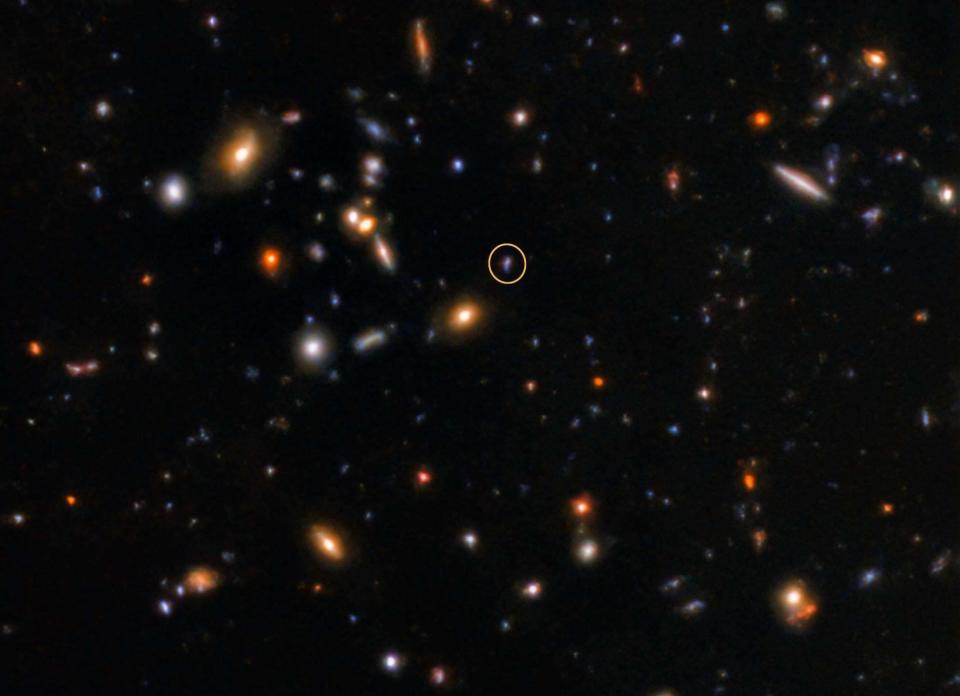Scientists see 'incredibly fast and faint' afterglow coming from deeper in space than ever before

Astronomers have seen the afterglow of a faint and fast burst found 10 billion light-years away.
The afterglow is so far away that it occurred just 3.8 billion years after the Big Bang, and offers a view of the universe when it was relatively near its very beginning.
The afterglow came from a short gamma-ray burst that is the second most-distant of those SGRBs ever detected, and the first where astronomers could see the optical afterglow that followed.
“We certainly did not expect to discover a distant SGRB, as they are extremely rare and very faint,” said Northwestern’s Wen-fai Fong, a senior author of the study.
Researchers now hope to see many more of those explosions – some of most powerful and brightest explosions in the entire universe, which happen when two neutron stars merge – which can help us understand more about the circumstances in which they happen.
“We believe we are uncovering the tip of the iceberg in terms of distant SGRBs,” said Kerry Paterson, the study’s first author. “That motivates us to further study past events and intensely examine future ones.”
The newly discovered burst is known as SGRB 181123B, and is described in a new study published in Astrophysical Journal Letters.
SRGBs happen when two neutron stars merge, and cause a very short, very powerful blast of gamma rays, which are the most energetic form of light. Astronomers generally only see a handful of such SGRBs each year that are precise enough to observe further.
Their afterglows only usually last a few hours before they fade away, and can no longer be seen. That means scientists are rarely able to catch the afterglow before it fades away.
The ability to see the newly discovered, distant afterglow happened because of lucky and quick work, however. It was first spotted by Nasa's Neil Gehrels Swift Observatory, and researchers were then able to quickly use the international Gemini Observatory in Hawaii to look for the afterglow.
“We were able to obtain deep observations of the burst mere hours after its discovery,” Paterson said. “The Gemini images were very sharp, allowing us to pinpoint the location to a specific galaxy in the universe.”
The distance also means that the SGRB was spotted when the universe was only 30 per cent of its current age, and so allowed astronomers to see neutron star mergers at a relatively young time in the universe's development. The discovery suggests that neutron stars are able to merge fairly rapidly, given they had time to be born, live and then die before combining into each other and sending the blast, all while the universe was a relative "teenager".

 Yahoo Finance
Yahoo Finance 